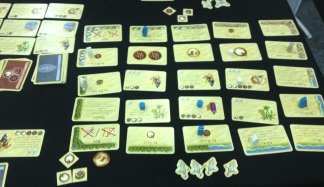Local Mom Discovers One Weird Trick to Ruin the Internet
We’re all so used to web ads that we just ignore them. “One weird trick” to lose weight, save on car insurance, or even keep your guns safe from Obama. For most of us, the only time we acknowledge them is for the jokes. It’s hard to believe that anyone could take them seriously.
But those ads do work on some people, obviously. Otherwise they wouldn’t keep spending money on them. It’s just one of the ways that the web seems to be dumbing down, along with the articles that are split across ten pages to increase pageviews. Pageviews that are, of course, used to serve up more ads about the secrets that local moms discovered.
It’s pretty scary to actually think about, though. Ads like this are basically scams, and they’re being served up by even many respectable sites. Instead of ignoring them, think about it for a minute: A huge percentage of internet content is funded by annoying gimmicks and outright lies. And chances are that you pride yourself on ignoring the more legitimate ads, as well. But that means you are doing nothing to fund the websites that you like. Other people are. Whether they’re gullible, suggestible, or just plain new to the internet, there are people out there who are bringing in the advertising revenue for your favorite sites. You’re not important to the sites, and those people are.
That’s the thought that occurs to me more and more these days when I click past ads and zero in on the articles. I’m not the site’s target audience, no matter how much I like their content. If they could replace me with an ad-clicking kid with no impulse control, they’d do it in a heartbeat. It’s only a happy accident that some sites are still producing material that I like, and I never have confidence that it will last. Why should it, when my high-falutin’, ad-ignoring ways are costing them money?
This isn’t a good situation. I like these websites. I want them to continue. And the sad truth is, I usually have no good way to support them, because I’m not about to start shelling out money for some expensive herbal placebo.
(Sure, there are sites like mine that don’t care about making a profit. But they aren’t the future of the internet. And there are high quality sites like Daring Fireball that can use fairly classy, curated ads which appeal to their fanbase. But there are still websites I like that depend on traditional ad money, and they have every right to stop doing things that I like.)
That’s why I tend to talk so much about crowd-funding, donations, and other alternate revenue streams for websites. I want to see people on the internet succeed, and I know I won’t ever take ads seriously. That means that, as much as I like free stuff, I know I’m going to have to pay sometimes to keep material that I like. The web has a lot of potential, but it’s obvious that advertising will stifle that potential, and most amateurs will not be able to get there on their own. As advertising gets more pervasive, and big companies find more and more ways to track our activities so that they can find the perfect ads for us, we need to look for alternatives. The future of all our hobbies depends on it.




